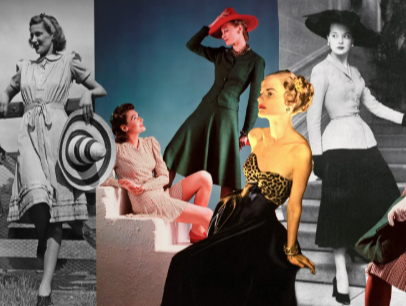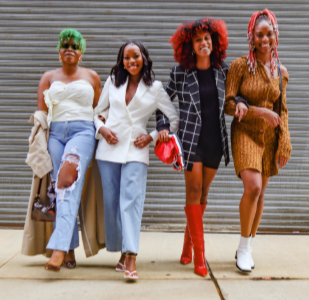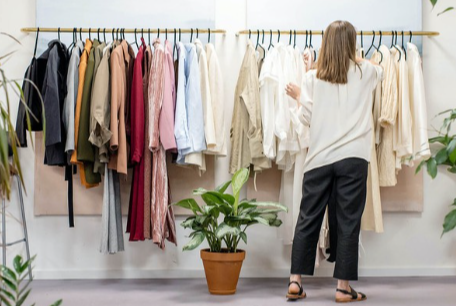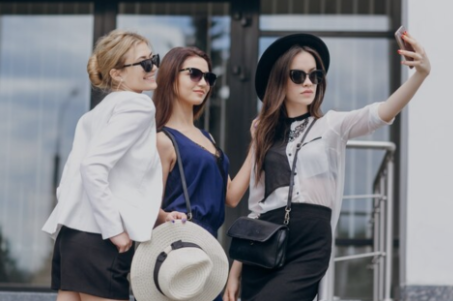The Evolution of Fashion: How Styles Have Changed Over the Decades
The evolution of fashion reveals a complex narrative shaped by cultural shifts and social dynamics. Each decade showcases a response to contemporary issues, from the liberating flapper dresses of the 1920s to the minimalism of the 1990s. Fashion serves not just as a reflection of personal expression but as a barometer of societal change. Understanding these transitions invites further exploration into how today’s styles may similarly be influenced by the world around us.
The Roaring Twenties: Flappers and the Birth of Modern Fashion
How did the Roaring Twenties redefine societal norms through fashion?
The emergence of flapper dresses marked a significant departure from previous styles, embodying a newfound sense of liberation and rebellion among women. Characterized by their dropped waistlines, fringe, and bold patterns, these dresses became synonymous with the flapper movement, which celebrated youthful exuberance and independence.
Influenced by the pulsating rhythms of jazz, flapper fashion reflected a culture embracing change, allowing women to express their individuality freely. This era dismantled rigid conventions, as women began to adopt more androgynous silhouettes, cutting their hair in bobs, and wearing makeup openly.
The flapper aesthetic not only showcased the spirit of the time but also paved the way for modern fashion’s evolution, emphasizing personal expression and autonomy.
Read more: Sustainable Fashion: How to Build an Eco-Friendly Wardrobe
The 1930s: Glamour and Resilience During the Great Depression
Resilience defined the fashion landscape of the 1930s, a decade marked by the economic turmoil of the Great Depression. Amidst widespread hardship, fashion became a form of escapism, allowing individuals to connect with a world of glamour and elegance.
Hollywood emerged as a beacon of hope, showcasing designs that embodied vintage elegance, from flowing gowns to tailored suits, inspiring the masses to seek beauty in adversity. Designers like Coco Chanel and Elsa Schiaparelli introduced innovative materials and silhouettes that emphasized both style and practicality.
This era’s economic resilience fostered creativity, leading to unique adaptations in fashion, blending luxury with affordability. Ultimately, the 1930s illustrated how style could uplift spirits while reflecting the socio-economic realities of the time.
The 1950s: The Rise of Suburbia and the New Look
As the 1950s unfolded, the emergence of suburbia significantly influenced fashion, marking a departure from the austere styles of the preceding decade.
Post-war optimism permeated the culture, fostering a desire for comfort and consumerism. This era saw the rise of the “New Look,” characterized by an emphasis on femininity through cinched waists and full skirts, an aesthetic championed by fashion icons such as Christian Dior and Audrey Hepburn.
Their influence not only shaped women’s fashion but also reinforced traditional gender roles within suburban life. Meanwhile, menswear adopted a more relaxed approach, reflecting the changing dynamics of leisure and family life.
The 1960s: Revolutionary Styles and the Counterculture Movement
While the 1960s emerged as a decade marked by social upheaval and cultural transformation, its fashion landscape reflected the revolutionary spirit of the times.
The rise of Mod fashion, characterized by bold colors and geometric patterns, epitomized youthful exuberance and defiance. Psychedelic prints, inspired by the counterculture movement, symbolized an escape from conventionality, mirroring the era’s quest for freedom and self-expression.
This period also saw a significant feminist influence, as women began to reject traditional constraints, embracing more liberated silhouettes and styles.
Youth rebellion became a dominant theme, with fashion serving as a powerful vehicle for political statements and personal identity.
The 1980s: Bold Statements and Power Dressing
Emerging from the vibrant cultural shifts of the 1970s, the 1980s marked a distinct evolution in fashion characterized by bold statements and power dressing.
This decade embraced power suits, often tailored for both men and women, symbolizing ambition and authority in the corporate world. Vibrant colors dominated the scene, reflecting a desire for self-expression and individuality.
Oversized accessories, such as chunky jewelry and large belts, complemented outfits, amplifying their visual impact. The punk influence persisted, infusing rebellious elements into mainstream fashion, while athletic wear transcended the gym, becoming a staple of everyday style.
Statement jewelry further accentuated personal flair, allowing individuals to showcase their uniqueness in a vibrant, dynamic era of fashion.
The 1990s: Grunge, Minimalism, and the Rise of Streetwear
The 1990s heralded a dramatic shift in fashion, marked by the rise of grunge, minimalism, and streetwear, each reflecting the complex social and cultural dynamics of the era.
Grunge aesthetics, epitomized by artists like Kurt Cobain, embraced a raw, unrefined look characterized by oversized flannel shirts and distressed denim trends.
In stark contrast, minimalist fashion prioritized clean lines and neutral tones, showcasing a polished yet understated style often favored by fashion icons like Calvin Klein.
Meanwhile, streetwear culture emerged, blending casual wear with high fashion, heavily influenced by pop culture and alternative music.
Accessories like chokers and bucket hats became staples, symbolizing a youthful rebellion that celebrated individuality and freedom in a rapidly changing world.
Conclusion
The evolution of fashion, like a vibrant tapestry woven through decades, illustrates society’s shifting values and aspirations. Each era’s distinct styles, from the flapper’s carefree spirit to the grunge’s defiant edge, serve as reflections of cultural currents and personal identity. As silhouettes transformed and palettes shifted, fashion emerged not merely as attire but as a narrative of resilience and rebellion. This dynamic interplay continues to shape contemporary expressions, reminding us that clothing is a canvas for both individuality and collective experience.




